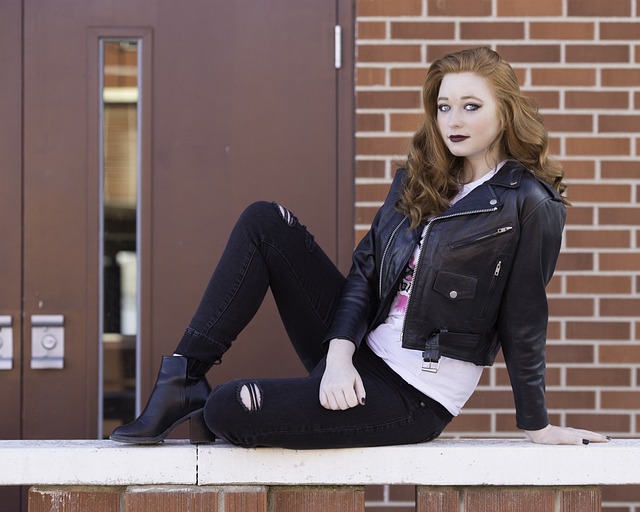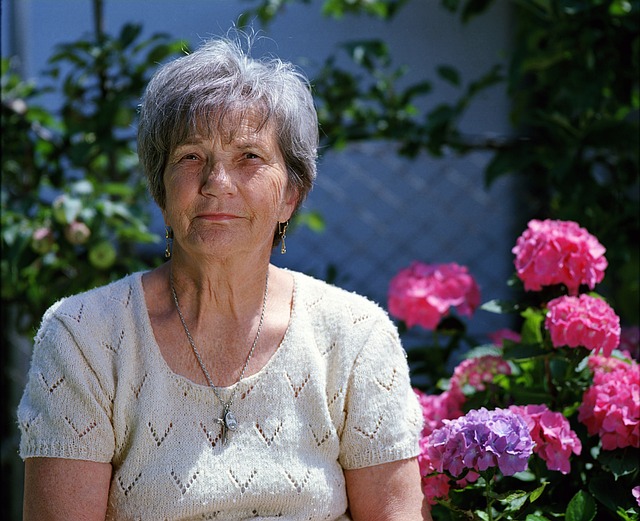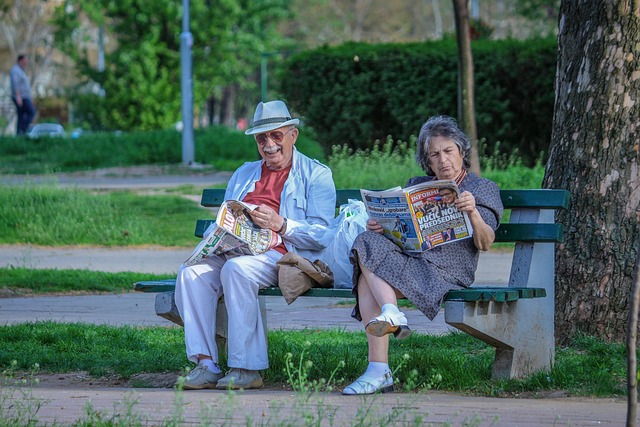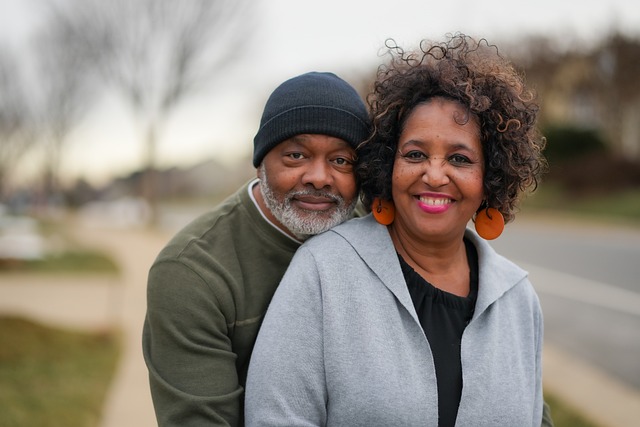Are you concerned about the safety of your elderly loved one in their home? Making a few simple changes can greatly reduce their risk of accidents and promote their independence. In this article, we will explore some practical and effective ways to make a home safer for a senior.
First, let’s start with lighting. Adequate lighting is essential in preventing falls and accidents. Make sure all areas of the house are well-lit, especially stairways, hallways, and entryways. Replace dim or burnt-out bulbs with brighter ones or consider installing motion-activated lights for added convenience and safety.
Secondly, remove any tripping hazards. Keep the floors clutter-free by clearing away any loose rugs, cords, or obstacles. Secure all rugs with non-slip backing or adhesive strips to prevent slipping. Ensure that electrical cords are tucked away or hidden to prevent accidents.
Furthermore, consider installing grab bars in strategic areas such as the bathroom and near stairwells. These sturdy bars provide stability and support when moving around, particularly in areas where slips and falls are more likely to occur. Additionally, in the bathroom, consider adding a raised toilet seat and a non-slip mat in the shower or tub to further enhance safety.
By implementing these measures, you can significantly improve the safety and well-being of your senior loved one in their home. Now, let’s dive deeper into each of these recommendations and explore other tips and tricks to create a secure living environment for your aging relative.
Identifying Potential Hazards
Assessing the Layout of the Home
When it comes to making a home safer for a senior, the first step is to assess the layout of the home. Take a walk through each room and make note of any potential hazards or areas that could be improved. Look for things like loose rugs, cluttered walkways, or furniture that may obstruct easy movement. By identifying these potential hazards, you can take steps to address them and create a safer environment for the senior in your life.
Identifying Obstacles and Clutter
One of the most common causes of accidents in the home is clutter. It’s important to identify and remove any obstacles or unnecessary clutter that could pose a tripping or falling hazard. Make sure walkways are clear and that furniture is positioned in a way that allows for easy navigation. By keeping the living space free of clutter, you can significantly reduce the risk of accidents and falls.
Checking for Uneven Surfaces
Uneven surfaces, such as thresholds between rooms or transitions between different types of flooring, can be a major trip hazard for seniors. Take the time to check the home for any uneven surfaces and consider using transition strips or ramps to create a smooth and safe walkway. Additionally, be mindful of any changes in flooring material or height that may cause a senior to lose their balance.
Looking for Slippery Areas
Slippery areas, such as bathroom floors or kitchen tiles, can be extremely dangerous for seniors. Look for areas in the home that may become slippery, such as near sinks, showers, or entryways. Consider using non-slip mats or rugs in these areas to provide extra traction and reduce the risk of falls. It’s also important to promptly clean up any spills or wet surfaces to maintain a safe environment.
Identifying Poor Lighting
Good lighting is essential for ensuring the safety of seniors in the home. Poor lighting can make it difficult to see obstacles or hazards, increasing the risk of accidents. Take the time to assess the lighting in each room and make any necessary improvements. Consider adding brighter bulbs, installing additional light fixtures, or using task lighting to ensure that the home is well-lit and that seniors can see clearly.
Improving Home Security
Installing Entryway Security Measures
Improving home security is important for seniors to feel safe and secure in their own homes. One of the first steps in enhancing home security is to install entryway security measures. This can include installing secure locks on doors and windows, using doorbell cameras or peepholes to see who is at the door before opening it, and reinforcing doors and frames to make them more resistant to break-ins.
Securing Windows and Doors
In addition to installing entryway security measures, it’s also important to ensure that windows and doors are secure. Check for any loose or damaged locks and replace them if necessary. Consider adding additional locks or security devices to windows and sliding doors to deter intruders. It’s important for seniors to feel safe and protected in their own homes, and securing windows and doors is a crucial step in achieving this.
Using Home Security Systems
Home security systems can provide an extra layer of protection for seniors. These systems often include features such as motion sensors, door and window sensors, and security cameras. When investing in a home security system, look for one that is user-friendly and can be easily accessed and controlled by the senior. Additionally, consider choosing a system that offers remote monitoring, so that you and the senior can have peace of mind even when you’re not at home.
Implementing Smart Technology
Smart technology can play a significant role in making a home safer for seniors. Smart home devices such as smart lighting, smart thermostats, and smart locks can enhance security and make daily tasks easier for seniors. For example, smart lighting can be programmed to turn on and off automatically, providing adequate lighting during the night and reducing the risk of falls. Smart locks can be controlled remotely, allowing the senior to lock and unlock their doors with ease.
Creating Safe Zones within the Home
Creating safe zones within the home can help seniors feel secure and supported. These safe zones can be areas where the senior spends most of their time, such as the living room or bedroom. Make sure these areas are well-lit, free of obstacles, and equipped with necessary safety features like grab bars or handrails. By creating safe zones within the home, seniors can have a designated space where they feel comfortable and protected.
Enhancing Bathroom Safety
Installing Grab Bars near Toilets and Showers
The bathroom is one of the most common areas for accidents and falls to occur. Installing grab bars near toilets and showers can provide stability and support for seniors.

Ensuring Proper Lighting
Proper lighting is essential in the bathroom to prevent accidents and falls. Make sure the bathroom is well-lit, with bright and even lighting that eliminates any dark or shadowy areas. Consider installing motion sensor lights that automatically turn on when someone enters the bathroom. This can provide added safety, especially during the night when visibility may be limited.
Using Non-Slip Mats or Rugs
Bathroom floors can become slippery when wet, increasing the risk of falls. Using non-slip mats or rugs in the bathroom can provide traction and reduce the likelihood of slipping. Place these mats or rugs near the shower or bathtub, as well as in front of the sink and toilet. Make sure they are securely in place and have a non-slip backing to prevent them from sliding around.
Lowering Counter Heights
In order to make the bathroom more accessible for seniors, consider lowering the height of counters, sinks, and vanities. This can make it easier for seniors to reach and use these fixtures without straining or losing their balance. Lowering the counter heights can also help seniors maintain their independence and perform daily tasks with ease.
Providing Easy Access to Supplies
Ensure that supplies such as toiletries, towels, and toilet paper are easily accessible in the bathroom. Consider installing shelves, baskets, or organizers that are within reach of the senior. This will minimize the need for reaching or bending over, reducing the risk of falls or injury. It’s important for seniors to have everything they need within arm’s reach to maintain their safety and independence.
Creating a Safe Bedroom Environment
Having a Comfortable Bed with Adequate Support
A comfortable and supportive bed is essential for a safe and restful sleep for seniors. Choose a mattress that provides the right amount of support and is easy to get in and out of. Consider using a bed with adjustable height or using bed risers to make it easier for the senior to get in and out of bed. Additionally, make sure the pillows and bedding provide proper support and comfort for the senior.
Using Bedside Lighting
Having bedside lighting is important for seniors, especially during the night when they may need to get up to use the bathroom or navigate their way around the room. Install bedside lamps or consider using motion sensor lights that automatically turn on when the senior gets out of bed. This will provide adequate lighting without the need to fumble for a light switch in the dark.
Removing Tripping Hazards
To create a safe bedroom environment, it’s important to remove any tripping hazards. This includes items like loose rugs, cords, or furniture that may obstruct walkways. Ensure that the floor is clear of clutter and that cords are properly secured or tucked away to minimize the risk of tripping. By keeping the bedroom free of hazards, seniors can move freely and confidently in their own space.
Ensuring Easy Access to Emergency Equipment
In case of an emergency, it’s important for seniors to have easy access to emergency equipment such as a phone, medical alert system, or a first aid kit. Place these items within reach of the bed, so that the senior can quickly and easily access them if needed. It’s also a good idea to have emergency contact numbers posted near the phone or in a visible location.
Arranging Furniture for Easy Maneuverability
Arrange the furniture in the bedroom in a way that allows for easy maneuverability for the senior. Ensure that there is enough space to walk around without bumping into furniture or obstacles. Consider removing any unnecessary furniture or items that may obstruct movement. By creating a clear and open pathway, seniors can navigate their bedroom safely and comfortably.
Making Stairs and Hallways Safe
Installing Stair Safety Gates
Stairs can pose a significant risk for seniors, especially those with mobility issues or balance problems. Installing stair safety gates can help prevent accidents and falls by keeping seniors from accessing the stairs unsupervised. Make sure the gates are installed securely and can be easily operated by the senior or caregiver. This simple addition can provide peace of mind and enhance the safety of the home.
Using Adequate Lighting
Proper lighting is crucial in stairs and hallways to prevent accidents and falls. Make sure these areas are well-lit, with bright lighting that eliminates any dark or shadowy spots. Consider using motion sensor lights that automatically turn on when someone enters the area. This will provide added safety, especially during the night when visibility may be limited.
Securing Handrails
Handrails are an essential safety feature in stairways and hallways. Make sure the handrails are securely attached and can support the weight of the senior. If handrails are not already installed, consider adding them to provide stability and support while navigating these areas.

Ensuring Clear Pathways
Keep stairways and hallways clear of any clutter or obstacles that may obstruct movement. Ensure that there is ample room to move and that the pathways are free of tripping hazards. This includes removing any loose rugs, cords, or furniture that may pose a risk. By maintaining clear pathways, seniors can move safely and confidently throughout the home.
Adding Nonslip Treads to Stairs
To minimize the risk of slipping on stairs, consider adding nonslip treads to each step. Nonslip treads are adhesive strips or mats that provide extra traction and prevent slipping. Make sure the treads are securely attached and cover the entire tread surface. Additionally, regularly check the treads for any signs of wear or damage, and replace them as needed to maintain their effectiveness.
Assisting with Mobility Challenges
Removing Loose Rugs and Tripping Hazards
Loose rugs and other tripping hazards can pose a major risk for seniors with mobility challenges. Remove any loose rugs or mats that could easily shift or bunch up, causing the senior to trip. If necessary, replace them with nonslip rugs or mats that will stay securely in place. Eliminating tripping hazards is a simple yet effective way to enhance the safety of the home for seniors.
Creating Open and Spacious Pathways
Mobility challenges can make it difficult for seniors to navigate through tight or crowded spaces. Create open and spacious pathways throughout the home to accommodate mobility aids such as walkers or wheelchairs. Remove any unnecessary furniture or clutter that may obstruct movement. By creating wider pathways, seniors with mobility challenges can move more freely and comfortably.
Installing Handrails or Grab Bars
Handrails and grab bars can provide much-needed support and stability for seniors with mobility challenges. Install handrails along stairways, ramps, and in the bathroom to assist with balance and leverage. Place grab bars near toilets, showers, and in hallways to provide additional support. Make sure these bars are securely installed and can support the weight of the senior.
Using Mobility Aids
For seniors with mobility challenges, using mobility aids can significantly enhance their safety and independence at home. This can include items such as walkers, canes, or wheelchairs. Ensure that the chosen mobility aid is the right fit and properly adjusted for the senior. Additionally, consider making modifications to the home to accommodate the use of these mobility aids, such as widening doorways or installing ramps.
Arranging Furniture for Stability
Arrange the furniture in the home in a way that provides stability and support for seniors with mobility challenges. Place furniture against walls or anchor it to prevent accidental tipping or sliding. Avoid furniture with sharp edges or corners that could cause injury. By arranging the furniture strategically, seniors can have a stable and secure environment to navigate.
Preventing Falls in the Kitchen
Organizing Kitchen Supplies for Easy Reach
In the kitchen, it’s important to organize supplies and utensils in a way that is easily accessible for seniors. Place frequently used items within easy reach, eliminating the need to stretch or strain. Consider using pull-out shelves or lazy Susans in cabinets to make it easier to retrieve items. By organizing the kitchen supplies efficiently, seniors can avoid accidents and minimize the risk of falls.
Installing Proper Lighting
Proper lighting is crucial in the kitchen to prevent accidents and ensure the safety of seniors. Make sure the kitchen is well-lit, with bright lighting that eliminates any dark or shadowy areas. Consider installing task lighting above work areas such as the sink or stove. Proper lighting in the kitchen will allow seniors to see clearly and navigate the space safely.
Ensuring Stable Countertops
In the kitchen, it’s important to ensure that countertops are stable and secure. Check for any cracks, wobbling, or damage to the countertop surfaces and repair or replace them as needed. Additionally, make sure that countertops are at a comfortable height for the senior, reducing the need to strain or bend over. Stable countertops provide a safe and supportive workspace for seniors.
Using Non-Slip Flooring
The kitchen can be a high-traffic area with potential spill hazards. To prevent slips and falls, consider using non-slip flooring in the kitchen. This can include materials such as textured tiles, linoleum, or nonslip mats. Regularly clean up any spills promptly and ensure that the flooring is properly maintained to retain its non-slip properties. Non-slip flooring can significantly reduce the risk of accidents in the kitchen.
Securing Appliances
Ensure that kitchen appliances are securely positioned and stable to prevent accidents. Check the stability of items such as the stove, refrigerator, or microwave. Make sure they are properly anchored or have nonslip mats underneath to prevent tipping or sliding. Additionally, ensure that cords are not a tripping hazard and are safely tucked away. By securing appliances, you can create a safer kitchen environment for seniors.
Addressing Fire Safety
Installing Smoke Detectors
One of the most important steps in fire safety is installing smoke detectors throughout the home. Make sure smoke detectors are installed on every level of the home, near bedrooms, and in common areas. Test the detectors regularly and replace the batteries at least once a year. Smoke detectors are crucial in providing early warning in the event of a fire, giving seniors valuable time to evacuate safely.
Checking Electrical Wiring
Faulty wiring can be a serious fire hazard in the home. Regularly check the electrical wiring to ensure it is in good condition and free of damage. Look for any frayed wires, loose connections, or signs of overheating. If you notice any issues, have a professional electrician inspect and repair the wiring. Ensuring the safety of the electrical system can greatly reduce the risk of fires.
Creating a Fire Escape Plan
Having a fire escape plan in place is essential for every household, especially for seniors who may have mobility limitations. Work with the senior to create a detailed escape plan that includes multiple exit routes and a designated meeting point outside the home. Practice the plan regularly to ensure that everyone knows what to do in the event of a fire. A well-prepared fire escape plan can save lives.
Keeping Fire Extinguishers Accessible
Having fire extinguishers readily accessible in the home is crucial for immediate response to small fires. Install fire extinguishers in key areas of the home, such as the kitchen, garage, and near fireplaces. Ensure that everyone in the household knows how to properly use a fire extinguisher. Regularly inspect the extinguishers, checking the pressure gauge and ensuring they are within the expiration date.
Avoiding Fire Hazards in the Kitchen
The kitchen can be a high-risk area for fires. To prevent kitchen fires, avoid leaving the stove or oven unattended while cooking. Keep flammable items, such as towels or curtains, away from heat sources. Avoid overloading electrical outlets and ensure that cords are in good condition. Additionally, regularly clean the exhaust fan and vents to prevent the buildup of grease and other flammable debris.
Minimizing Trip and Fall Hazards
Removing Clutter and Trip Hazards
One of the most effective ways to minimize trip and fall hazards in the home is to remove clutter. Clear walkways and living spaces of unnecessary items that could cause trips or falls. Ensure that cords are properly secured or tucked away to prevent tripping. By keeping the home free of clutter, you can significantly reduce the risk of accidents.
Using Secure Rugs or Carpeting
Rugs and carpeting can be potential tripping hazards if they are not properly secured. Use nonslip rug pads or double-sided tape to keep rugs securely in place. Additionally, choose low-pile carpeting or rugs with short fibers to minimize the risk of tripping.

Keeping Walkways Clear
Clear walkways are essential for ensuring the safety of seniors. Maintain clear paths throughout the home by removing any obstacles or unnecessary furniture. Make sure there is enough space to comfortably navigate with mobility aids if needed. By keeping walkways clear, seniors can move about the home safely and without the risk of tripping or falling.
Fixing Loose or Uneven Flooring
Loose or uneven flooring can be a major tripping hazard for seniors. Regularly inspect the floors for any loose boards, tiles, or other flooring materials. Repair or replace any loose or damaged flooring to ensure a smooth and stable surface. Additionally, consider using transition strips or ramps to create a smooth transition between different types of flooring.
Promptly Repairing Damaged Surfaces
Damaged surfaces, such as cracked sidewalks or uneven pathways, can pose a serious risk for trips and falls. Promptly repair any damaged surfaces in and around the home to maintain a safe environment for seniors. This includes repairing cracks in sidewalks, smoothing out uneven surfaces, and filling in potholes or gaps in driveways. Regular maintenance can help prevent accidents and injuries.
Conclusion
The Importance of Making a Home Safer for Seniors
Making a home safer for seniors is of utmost importance to ensure their well-being and independence. By identifying potential hazards, implementing security measures, enhancing bathroom safety, creating a safe bedroom environment, making stairs and hallways safe, addressing mobility challenges, preventing falls in the kitchen, prioritizing fire safety, and minimizing trip and fall hazards, you can significantly reduce the risk of accidents and provide a safe and supportive environment for seniors.
Peace of Mind for Seniors and Their Loved Ones
Creating a safe home for seniors not only provides them with peace of mind but also reassures their loved ones. Knowing that their elderly family member is living in a home that is free of hazards and equipped with necessary safety features can ease concerns and allow everyone to focus on enjoying quality time together.
Creating a Supportive and Aging-Friendly Environment
By implementing the various ways to make a home safer for seniors, you are not only creating a safe environment but also an aging-friendly space. These modifications and safety measures can help seniors maintain their independence, reduce the risk of accidents and falls, and enhance their overall quality of life. It is important to continually assess and update the home as the needs of the senior change over time.


